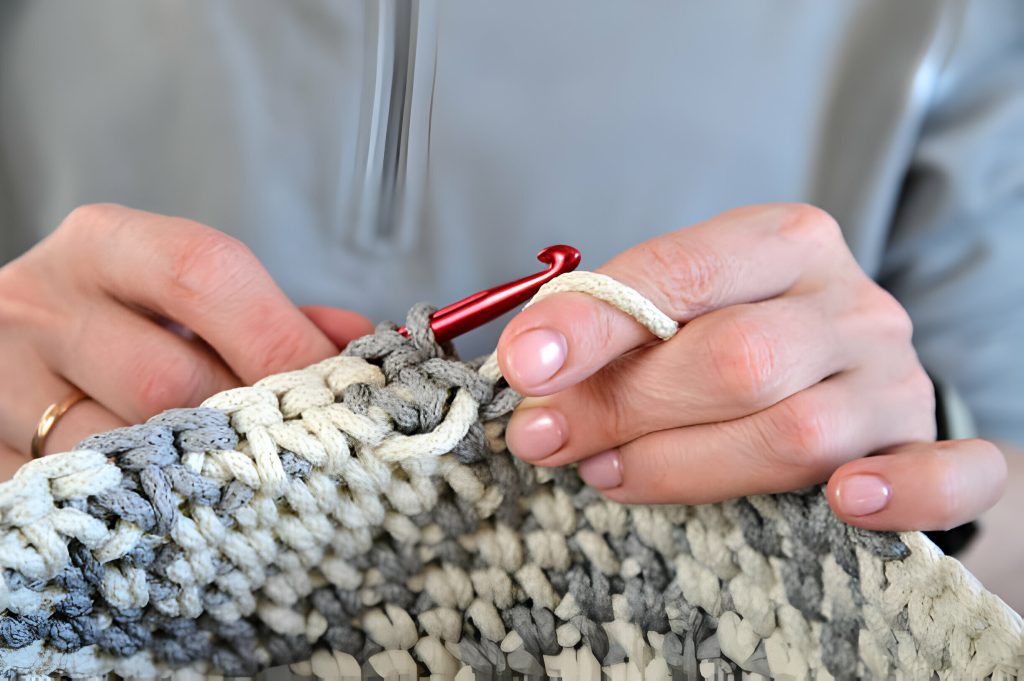Do you know that mastering advanced knitting techniques can increase your speed by up to 30%? Imagine completing projects faster and more efficiently. By utilizing strategies like lever knitting, circular needles, and no-purl techniques, you can revolutionize your approach to knitting. This article will guide you through the fastest ways to knit, from optimizing stitch handling to adjusting tension for speed. Get ready to take your knitting skills to the next level with these expert tips!
Efficient Stitch Handling
When handling stitches efficiently, turn your fingers into a conveyor belt to transport stitches and increase knitting speed and efficiency. Proper finger positioning is crucial for smooth stitch movement. Coordinate your hands effectively to optimize speed techniques. Control tension by adjusting your grip gently. By mastering these elements, you can enhance your knitting experience significantly. Remember, practice is key to improving hand coordination and overall efficiency in handling stitches. With consistent training, you’ll find yourself seamlessly moving through rows at a faster pace while maintaining control over the tension of your work. So keep practicing, focus on optimizing each stitch, and watch as your knitting speed improves with each project you tackle!
Optimizing Stitch Placement
Optimizing stitch placement by bunching up stitches on the left needle can enhance knitting speed and efficiency. When selecting needles, opt for smooth lightweight materials like metal to reduce friction and improve glide. Use stitch markers for complex patterns and point protectors to prevent dropped stitches. Utilize a project bag to organize your work, store supplies, and keep yarn untangled. To prevent hand strain, take regular breaks, stretch before and after knitting, maintain good posture, and consider ergonomic needle options. By implementing these practices, you’ll not only knit faster but also ensure a comfortable and sustainable knitting experience while keeping your projects organized and your hands healthy.
Needles for Speed Knitting
To enhance your knitting speed, consider using metal needles that reduce friction and allow stitches to glide more effortlessly.
Needle Material Comparison:
- Metal needles are ideal for speed due to reduced friction.
- They provide a smoother knitting experience, enhancing efficiency.
- Metal needles work well for large sections of stockinette stitch.
Remember these tips when facing Speed Knitting Challenges:
- Implement fast knitting techniques like picking/flicking for improved speed.
- Optimize stitch handling with efficient tension control and point protectors.
- Utilize both hands to support each other during the knitting process.
Incorporating these Metal Needle Benefits into your practice can significantly boost your overall knitting pace while maintaining stitch quality.
Adjusting Tension for Speed
Adjusting tension for speed can help you knit looser and increase your knitting pace. By employing efficient handling techniques, such as turning your fingers into a conveyor belt to transport stitches smoothly, you can achieve quick knitting results. This adjustment allows for rapid progress, facilitating needle movement and enhancing overall speed techniques. Knitting looser enables easier needle insertion with less resistance when pulling yarn through, resulting in over 100 stitches per minute. With this method, your rapid progress will be noticeable as you efficiently handle each stitch, ensuring a smoother and quicker knitting experience. Remember, finding the right tension balance is key to optimizing your speed and achieving faster project completion.
Training for Speed Knitting
Training for speed knitting involves practicing in slow motion to familiarize your muscles with the motions, ensuring flawless technique execution. This approach enhances muscle memory and paves the way for quicker knitting. To master speed training effectively, consider these tips:
- Technique Mastery: Perfecting different knitting styles like continental or lever knitting can significantly boost your speed.
- Posture Tips: Maintaining proper posture while knitting is crucial for preventing strain and injuries, thus enhancing your overall health benefits.
- Consistent Practice: Regularly practicing your newfound techniques will not only improve your speed but also solidify muscle memory, leading to more efficient and faster knitting sessions.
Maintaining Knitting Health
Maintaining good posture while knitting helps prevent strain and injuries, ensuring your overall knitting health. To further enhance your well-being, incorporating posture tips, stretching exercises, hand health practices, ergonomic tools, and injury prevention techniques is crucial. Here is a table outlining these essential aspects for maintaining knitting health:
| Category | Description |
|---|---|
| Posture Tips | Sit upright with support for back |
| Stretching Exercises | Regularly stretch hands and wrists |
| Hand Health | Take breaks to prevent overuse |
| Ergonomic Tools | Use cushioned supports for wrists |
| Preventing Injuries | Listen to your body’s signals |
Utilizing Both Hands
Using both hands optimizes movements for efficiency and enhances speed incrementally when knitting.
- Hand coordination: Engage both hands actively for smoother knitting motions.
- Speed techniques: Implement dual knitting to increase your productivity.
- Efficiency tips: Two-handed knitting allows for quicker progress and a more enjoyable experience overall.
Consistent Knitting Practice
To enhance your knitting efficiency, ensure you practice consistently to improve your speed and skills. Continuous knitting not only helps in developing muscle memory but also allows for technique mastery. Speed drills can further enhance your abilities by increasing the pace at which you knit. By maintaining posture awareness throughout your knitting sessions, you can prevent strain and discomfort, thus optimizing your performance. Remember that practicing regularly is key to honing your craft and becoming a faster knitter overall. Stay dedicated to your routine, incorporate speed drills into your practice sessions, and focus on mastering different techniques to boost your efficiency in knitting projects of all sizes.


